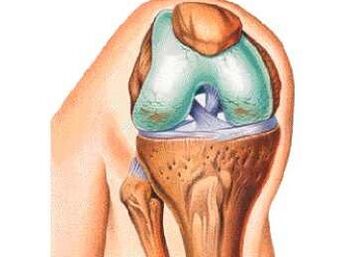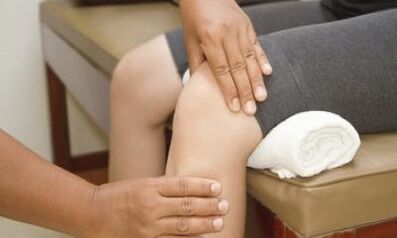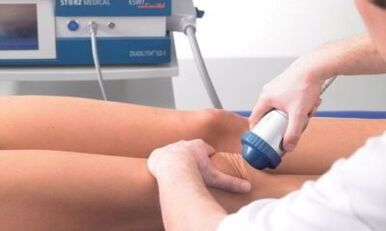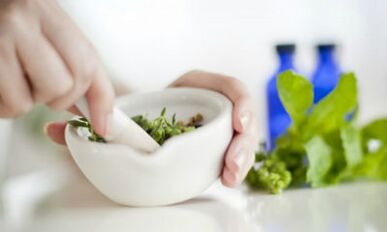Arthrosis or osteoarthrosis of the knee joint is a disease that occurs against the background of dystrophic changes with subsequent connective tissue growth.There are many factors that affect the development of the disease, but they all eventually lead to a violation of metabolism in the cartilage.In medical literature, knee joint arthritis is called gonarthrosis.
According to statistics, gonarthrosis occupies a major position in the frequency of appearance between other arthrosis.The disease results in severe discomfort, which can develop in pain when walking and at rest.
Recognition of early symptoms will help doubt the development of pathology and cure it in the early stages.
Reason
According to medical classification, there is primary and secondary gonartrosis or arthritis of the knee.
Knee joint arthrosis can occur against the backdrop of various diseases or act as their complication.When, due to a blurred story or a clinical appearance, the exact cause cannot be set, gonarthrosis is called primary, but if the cause is known, then such arthritis is called secondary.
Arthrosis develops with age in almost all people, on average, this period begins after 45-50 years of life.
The course and pathogenesis of primary and secondary arthrosis are the same and do not depend on the cause of the occurrence.
The most common causes of arthrosis and osteoarthrosis of the knee joint are:
- traumatic knee damage;
- joint deformation inside and outside;
- shortening of a lower limb;
- abnormal joint hypermobility;
- kondroblast dysplasia;
- Calkinosis of the cartilage;
- osteomyelitis of the femur and tibia;
- rheumatoid arthritis or arthritis of any other etiology;
- Glucose metabolism;
- Metabolic diseases and hormonal diseases.
Injuries.After receiving knee damage to the joint cavity, inflammation with a large focus of alliteration can develop.After the disappearance of pro -inflammatory agents, the processes of compensation or arthrosis are activated.
Most often, the disease appears against the backdrop of a fracture with a rupture of the ligaments and damage to the bag and the surface of the joint.

Congenital deformities.Valgus or variable deformation is very often found and without proper correction can be complicated by sclerotic knee changes.This is due to the fact that one of the knees falls more than the load than it should be.
Shortening any of the lower extremities.As with deformities, in the pathogenesis of the development of the disease, the improper distribution of knee weight plays the role.
Knee hypermors.In this condition, the coating of the cartilage tissue of the knee joint can occur with degeneration and subsequent degeneration in arthritis.Hypermorion often leads to spontaneous displacement and sprains of the joint capsule.
Hand -driven dysplasia.Due to the improper development of the motor surface in the knee joint, a pathological increase in connective tissue occurs.
Calkinosis of the Union.The pathogenesis is based on the deposition of salts in the joint cavity and the formation of a specific precipitate, which causes calcification with subsequent osteoarthritis.
Osteomyelitis.Bacterial inflammatory disease in which the destruction of bones and joints occurs.First, ankylosis is formed and only then sclerosis.
Arthritis of any etiology.The most dangerous are rheumatoid arthritis, accompanied by autoimmune heart lesions and joints.
Diabetes, like metabolic disorders, leads to a violation of the flow of nutrients in the joint and cartilage seedling.
Overweight with a large body weight, large loads are on the knees when walking and in a standing position.As a result of continuous pressure, blood flow to the knee joints decreases and develops atrophy with dystrophy.
Symptoms

Symptoms with arthrosis of the knee joint depend on the stage of the pathological process.Based on this, by analyzing the symptoms and rhythm of their growth, you can evaluate the degree of changes in cartilage tissue.
Knee arthrosis symptoms:
- the presence of pathological sounds during movement;
- pain after load or at rest;
- reduction of functions;
- edema and joint growth;
- pathological displacements, fractures and subluxation;
- Temporary blockage that can occur when bending and extension of the joint.
Click and crisis are not immediately observed, and if they notice, they do not pay proper attention.The pathological sounds are encountered in the idea that a pathological process with the deposition of salts or the formation of osteophytes occurs in the cartilage gap.
Pain occurs due to the formation of calcins or osteophytes.At first, the pain syndrome is not expressed, later appears in the morning and passes after lunch, with the progression of the disease, the pain can occur at rest.
A decrease in node functions manifests itself in the rigidity of the movements and a decrease in their amplitude.Depending on the scene, the restriction of the movements can last a certain time and go to rest.
Edema occurs due to inflammation and hypersecretion of synovial fluid.There are also options when the skin is inflamed on the joints.Such symptoms can be of red fever or rheumatism.
Displacements and subluxation occur because the process applies to bones and knee ligaments.
Clushing is a condition during which movement on each shaft is completely limited.Such a symptom indicates the neglect of the process and the need for complex treatment.
Ladder

Class osteoarthritis according to the following signs:
- radiological symptoms;
- clinical manifestations;
- Laboratory data.
The most common and convenient classification is radiological, it is simple and understandable for people without medical education.
Based on X -rays, four degrees of arthrosis are distinguished in the knee joint:
- Reduce the common gap is small, and there is no osteophytes;
- The Interspoint Trench is not tired, but there are signs of small calcinates or osteophytes;
- The Interspoint Trench has an expression of comfort, there is osteophytes, the common deformation begins;
- Lack of joint gap, bone deformity, ankylosis and dystrophy.
As for the clinical figure, the following stages are distinguished:
- The symptoms of mild degree are irrelevant, occur in the morning and spend 30-60 minutes after waking;
- The average degree is a pronounced symptom, the feeling of discomfort passes before lunch, swelling is irrelevant, it progresses quickly without treatment;
- A severe degree - characterized by constant painful pain, discomfort at rest, breakfast stiffness does not pass until dinner, ankylose, prison and knee joint sinusitis develop.
Laboratory tests are taken into account, soybean and leukocyte indicators are evaluated.It is also necessary to check the presence of a rheumatoid factor.
Diagnostic methods
The diagnosis of knee joint arthrosis is not complicated, but requires certain skills from the doctor.
Two types of diagnostic measures are distinguished:
- Laboratory diagnostics;
- Instrumental diagnostics.
For the correct diagnosis, each of the methods must be taken into account and analyze the figure as a whole.
Laboratory
If arthritis is suspected, the attending doctor describes the following tests:
- General blood and urine test;
- Biochemical blood test;
- Determination of antibodies to rheumatoid factor;
- Determination of antibodies in their cells.
Laboratory data do not perform information on the stage of development of the disease.
Useful

The instrumental diagnosis of arthrosis includes the following methods:
- Radiography in two standard projections;
- minimum invasive arthroscopy;
- UZD exam;
- Ct;
- MRI;
- Skintigraph (according to indications).
Diagnosis of radiation is aimed at determining the changes in joining and evaluating the condition of the cartilage.
Treatment
Treatment of knee joint arthrosis is a long process.The duration of treatment is due to the fact that the indemnity of the cartilage tissue occurs very slowly, and in some cases it is completely impossible to restore the node.
Modern methods of treatment of arthrosis in the knee joint include comprehensive measures aimed at removing inflammation, normalizing lifestyle, and improving cartilage metabolism.
There are such methods of therapy:
- medication therapy;
- Exercise therapy and massage;
- popular medicine;
- Surgical interventions.
The doctor prescribes treatment based on the duration of the disease, the stage of its development and clinical manifestations.
medicaments
Medication therapy is aimed at alleviating pain and inflammatory response.For this purpose, the following medicines are described:
- anti -inflammatory non -steroidal;
- chondroprotectors;
- glucocorticoid;
- cytostatic.
The arthritis of the knee arthrosis have many side effects, in treatment it is necessary to monitor the condition of the gastrointestinal tract and the kidneys.
Often, arthritis medicines are prescribed for a long period, so less toxic medicines should be selected.
exercise
The treatment of arthrosis using exercise therapy is aimed at strengthening the muscles and knee ligaments.With dosed loads on the cartbbed cartabolism, metabolism improves and regenerative processes accelerate.
Exercises should be selected individually taking into account the stage of the patient's disease and physical abilities.
Massage
Knee joint massage allows you to improve your blood flow and relieve discomfort.Proper massage can prevent the appearance of ankylosis and fake joints.
Popular
Treating the arthrosis of the knee joint at home should not be the main method of combating pathology, or can only act as an addition to the drug.

Home treatment includes:
- lowering body weight;
- normalization of work hygiene and compliance with the day regime;
- The fight against inflammation.
The anti -inflammatory effect is possessed by such herbs:
- St. John's Break and Wort Tincture;
- graves;
- white cabbage leaves;
- Infusions and decoctions from dandelion and chamomile.
working
The surgery is described with the ineffectiveness of conservative therapy or at the request of the patient.One of the main indications for surgical intervention is the 4th stage of the disease from radiological characteristics.
During surgery, surgeons can completely replace the joint with an endoprostese or change one of its parts.

























